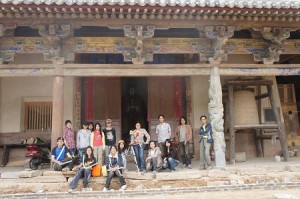
Teachers and students participating in the survey
Peking University, May 24, 2011: PKU professors and students found the only remaining 11th-century Wudian-roof Building in north China’s Shanxi Province on May 14, 2011.
During the ongoing mapping of Shanxi Wanrong Jiwang Temple hall after the renovation, professors and students of Peking University (PKU) found some unobvious brush marks on a tie beam beneath a purlin under the eaves. Due to long-term exposure to the air, there were only four characters of them identifiable. After the wet processing on the surface, it can be confirmed that the inscription was “Tiansheng Yuan Nian” (the first year of Tiansheng period, CE 1023).
The discovery of this chronology not only provided accurate era of the building, which helped to identify it as the remaining Wudian-roof (with four slopes and five ridges) Building of Song Dynasty (960-1279), but also laid a solid foundation for highlighting its important historical value, scientific value and research value.
In 2007, the PKU School of Archaeology and Museology conducted a field survey in Wanrong, Shanxi Province. According to its architectural form, the temple was initially determined to be built in Song Dynasty. Then during the following years, PKU conducted a systematic research on buildings of Song and Yuan Dynasty in Linfen, Yuncheng from the chronology of architectural form to the building materials analysis, which strengthened the understanding for Jiwang Temple and the wooden-structure building in Song Dynasty.
In 2010, the PKU School of Archaeology and Museology, together with Shanxi Institute of Ancient Architecture Conservation and other units, declared the Wanrong Jiwang Temple as an ancient Chinese architecture fine mapping project in the Compass Plan of China’s State Administration of Cultural Heritage. Considering the renovation situation, the mapping research for the Jiwang Temple would be carried out for three times in order to make sure to keep the cultural relics and historical information as much as possible.
Jiwang Temple is regarded as a protected national key culture relic site. Now there is a hall, which is five-bay wide and three bays in breadth, with a single-eave Wudian roof, and a stage now.
Renowned Chinese architect Liang Sicheng (1901-72) once regretted that he hadn’t seen any remaining Wudian-roof buildings of Song Dynasty in China. The finding by PKU professors and the students majoring in heritages and historic architecture, presented this building coincided with the 110th birth anniversary of Liang.
Since the discipline of heritage and relics building was established at PKU, it has been based on the theory of historical archaeology and devoted to probing the archaeology research method for ancient wooden-structure architecture. The discovery mentioned above is a great teaching achievement after the School of Archaeology and Museology’s year-round work, yet also proves that it’s still a long way to go before finishing all the researches on Chinese ancient architecture. More scientific methods should be used to sort out the development of ancient Chinese architectural context — in order to restore the historical process — and thus reveal its historical significance to the history of culture heritage protection and repair. Value research is also essential to the management and use, which will be helpful to enhance the overall value of China’s culture heritage in an effective way.
Reported by: Xu Yitao
Translated by: Duan Ranjia
Edited by: Arthars
Source: PKU News (Chinese)

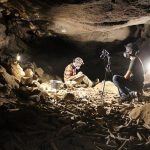
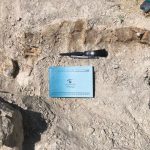

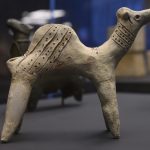
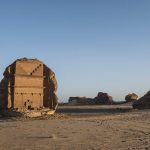

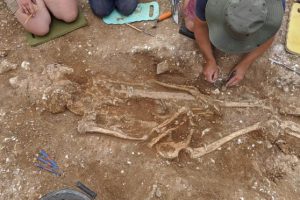
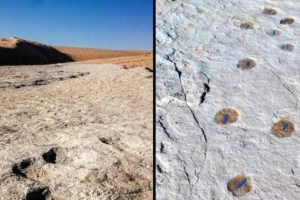
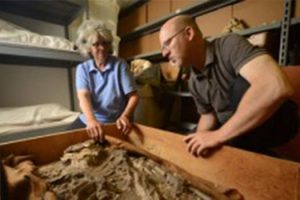





En France, le Parti pirate présentera des listes dans six des huit http://www.princegeorgedebthelp.ca/wp-includes/circonscriptions, avec pas moins de 30 candidats en Île-de-France et pour les Français à l’étranger. En plus de ça, le mouvement sera présent dans une quinzaine d’autres pays européens.
En France, le Parti pirate présentera des listes dans six des huit http://www.hi-techalarms.co.uk/je4.jerseys.htmlcirconscriptions, avec pas moins de 30 candidats en Île-de-France et pour les Français à l’étranger. En plus de ça, le mouvement sera présent dans une quinzaine d’autres pays européens.
Aux municipales,cheap nfl jerseys Freddy Vasseu se présentait en tant que membre du Parti pirate sur une liste de centre droit à Port-Lès-Valence. Résultat des élections, cheap nfl jerseysil est élu au conseil municipal de la ville dès le premier tour. Le Parti pirate compte également 2 autres élus municipaux.
Blecher’s letter makes clear what many have anticipated: Donald Sterling will not go down without a fight and that he is taking active steps towards litigation.cheap nba jerseys A letter of this type is considered a precursor to the filing of a lawsuit. Blecher’s letter offers no ambiguity about Sterling’s intentions.
MCCANN: The potential legal fallout of Sterling’s CNN interview
There are different people who wears sunglasses to whatever purpose they want to use it at, some of the athletes especially golfers wear sunglasses to remove the glare of the sun while they are playing the game in order to see the background clearly. Always at the forefront of elegance again fashion, Ray Ban sunglasses largely have matchless of the most valid further commoving histories of integrated the designer brands.
Ray Ban is, for certain, the best known title in sunglasses in the entire world.One way to protect your eyes is to wear sunglasses, but you do not have to give up being stylish in order to protect your eyes, wear ray ban caravan sunglasses and create a stylish look while protecting your eyes.The master artisans manufacture each pair with utmost treatment and for that they mix resin with seven unique layers of carbon fibers in the water reduce carbon sheet.
“We reject your demand for payment,” the letter tells Buchanan,http://www.broadley-artstone.co.uk/je7.jerseys.html who on May 14 informed Sterling by letter that he must pay the $2.5 million fine.
Blecher’s letter goes on to identify two basic legal defenses for Sterling.
This douche bag loves his illegal bretheren because hes a itiaen of the world and we should be ashamed of ourselves I got news for you Asswipe get your asswiping ass back to the craphole exactly where you came from with all of your illegal beaners
Fake Ray Bans Aus http://www.twitoos.com/news_list.php?p=1429
Laropiprant has actually never ever been approved by the FDA for usage in the UNITED
STATE and when taken alone has actually been revealed to increase intestinal blood loss.
Our pharmaceutical lawyers have nationwide leadershipin Lipitor legal actions.
One meta-analysis involving 13 separate researches that
was published in June 2010 located that at statin individuals
had a 9 % raised threat for diabetes.
Threat aspects for establishing diabetes from Lipitor are enhanced in females who are
overweight, have high blood glucose, or a genealogy of diabetic
issues.
At this time I am going to do my breakfast, after having my breakfast coming again to read further news.
Researches have actually linked the use of Lipitor and also various other statins with a greater incidence of diabetic issues, specifically
amongst females.
That’s why he is committed to dealing with the source of chronic condition by utilizing
the power of Practical Medicine to transform healthcare.
We at Consumer Claims Facility of America are aiding those who have actually been hurt by Lipitor fight back.
With unrestrained blood sugar level levels, folks taking Lipitor can ultimately establish kind II diabetics issues.
This is the perfect website for anyone who would like to understand this topic.
You realize so much its almost tough to argue with you (not that I personally will need toHaHa).
You certainly put a fresh spin on a topic that has been written about for ages.
Wonderful stuff, just excellent!
HbA1c as well as fasting serum blood sugar levels aid identify whether a person has diabetes.
This is my first time pay a visit at here and i am in fact happy to read everthing
at one place.
I do not know whether it’s just me or if everyone else experiencing issues
with your site. It looks like some of the written text within your posts are running off the
screen. Can somebody else please comment and let me know if this is happening to them too?
This could be a problem with my internet browser because
I’ve had this happen before. Thanks
Hello! Quick question that’s completely off topic. Do you know how to make your site mobile friendly?
My weblog looks weird when browsing from my iphone 4.
I’m trying to find a theme or plugin that might be able to resolve this issue.
If you have any suggestions, please share.
Cheers!
Every weekend i used to pay a quick visit this web site,
because i want enjoyment, as this this website conations genuinely pleasant funny information too.
I’m not positive where you are getting your info,
however good topic. I needs to spend some time finding out more or figuring out more.
Thank you for magnificent info I used to be looking
for this information for my mission.
I’m gone to inform my little brother, that he should also go to see
this website on regular basis to obtain updated from
newest gossip.
Hi there! This post couldn’t be written any better! Looking through
this article reminds me of my previous roommate! He constantly kept
preaching about this. I’ll forward this post to him. Pretty sure he will have a good read.
Thank you for sharing!
I must thank you for the efforts you have put in writing this site.
I’m hoping to view the same high-grade blog posts from you later on as well.
In fact, your creative writing abilities has encouraged
me to get my own, personal site now 😉
Generally I do not read article on blogs, however I would like to
say that this write-up very compelled me to check out and do
it! Your writing style has been amazed me. Thank you, quite great post.
What’s up friends, fastidious piece of writing and nice urging commented at this place, I am truly enjoying by these.
Great website. Lots of helpful information here. I’m
sending it to several friends ans also sharing in delicious.
And certainly, thanks for your effort!
Hello, i read your blog occasionally and i own a similar one and
i was just wondering if you get a lot of spam remarks?
If so how do you protect against it, any plugin or anything
you can suggest? I get so much lately it’s driving me
mad so any assistance is very much appreciated.
Greetings! Very useful advice in this particular article!
It is the little changes that produce the largest changes.
Thanks for sharing!
Hi, I check your blogs regularly. Your story-telling style is witty, keep up the good work!
Hey, I think your website might be having browser
compatibility issues. When I look at your blog site in Chrome, it looks fine but when opening in Internet Explorer, it has some overlapping.
I just wanted to give you a quick heads up!
Other then that, excellent blog!
This is very interesting, You’re a very skilled blogger.
I have joined your feed and look forward to seeking more of your
magnificent post. Also, I have shared your site
in my social networks!
Hello there, I found your blog by way of Google even as searching
for a similar matter, your website got here up, it seems great.
I have bookmarked it in my google bookmarks.
Hello there, simply changed into aware of your blog via Google, and
located that it’s really informative. I am going to be
careful for brussels. I’ll appreciate when you continue this in future.
A lot of folks can be benefited out of your writing.
Cheers!
Keep on writing, great job!
Somebody necessarily assist to make critically
posts I’d state. That is the very first time I frequented your web page and up to now?
I amazed with the research you made to create this particular post incredible.
Magnificent activity!
I truly love your blog.. Pleasant colors & theme. Did you make this amazing site yourself?
Please reply back as I’m attempting to create my very own website and would love to find out where you
got this from or what the theme is called. Kudos!
I quite like reading through an article that can make people think.
Also, many thanks for permitting me to comment!
Fine way of telling, and pleasant article to take information regarding my presentation subject matter, which i am
going to present in academy.
Amazing issues here. I’m very happy to look your article.
Thanks a lot and I am looking ahead to contact you. Will you kindly drop me a e-mail?
Ahaa, its pleasant conversation on the topic of this paragraph here at this webpage, I have read all that, so at this time me also commenting
here.
.
Very interesting post. Your own web site is swiftly turning out to be certainly one of my favorites
Buy Cheap Oakley http://vancouvergadgets.ca/new.php?pid=653
Hi there to all, how is everything, I think every one is getting more from
this site, and your views are fastidious for new users.
There’s certainly a great deal to learn about this
subject. I really like all of the points you have
made.
I feel this is among the such a lot vital info for me.
And i am satisfied reading your article. But want to statement on some normal issues, The web site style
is ideal, the articles is truly great : D. Just right process,
cheers
I was recommended this blog via my cousin. I’m now not positive whether this submit is written by way of him as
no one else recognize such certain approximately
my difficulty. You’re incredible! Thanks!
Peculiar article, just what I was looking for.
This isn’t really difficult, considering that there are numerous excellent resources and devices you could utilize.
Greetings! This is my 1st comment here so I just wanted
to give a quick shout out and say I really enjoy reading through your articles.
Can you recommend any other blogs/websites/forums that deal with
the same topics? Thank you!
Present students can make a new diploma inside Company
Supervision. There is no doubt that the Indian postal
service isn’t the best in the world and there have been many instances when students
have failed to appear for an examination or a
job interview, simply because their application wasn’t delivered on time.
There are myriads of such applications, which will keep
you, entertained; such as radio stations, movie feedbacks, local
events intelligence, music, and cartoon animation characters.
Have you ever considered publishing an e-book or
guest authoring on other blogs? I have a blog based on the same topics
you discuss and would really like to have you share some stories/information. I know my
readers would value your work. If you’re even remotely interested, feel free to shoot me an email.
With havin so much content do you ever run into any problems of plagorism or copyright violation? My site has a lot of unique content I’ve either authored myself or
outsourced but it seems a lot of it is popping it up all over the internet without my
permission. Do you know any methods to help stop content from being stolen? I’d really
appreciate it.
I know this if off topic but I’m looking into starting my
own blog and was curious what all is needed to get set up?
I’m assuming having a blog like yours would cost a pretty penny?
I’m not very web smart so I’m not 100% sure. Any recommendations or advice would be greatly appreciated.
Cheers
We’re a bunch of volunteers and starting a new scheme in our community.
Your web site provided us with helpful info to work on. You have performed a formidable task and our entire community will probably be thankful
to you.
wonderful issues altogether, you just gained a brand new reader.
What may you suggest about your publish that you just made a few days ago?
Any sure?
Hi every one, here every person is sharing these experience, thus it’s
fastidious to read this website, and I used to pay a visit
this weblog daily.
Hey there! Do you use Twitter? I’d like to follow you if that would be okay.
I’m definitely enjoying your blog and look forward to new updates.
Does your website have a contact page? I’m having problems locating it
but, I’d like to send you an email. I’vegot some suggestions for your blog you might be interested in hearing.
Either way, great blog and I look forweard to seeing it improve over time.
Hi there to all, how is all, I think every one is getting more from this site,
and your views are pleasant designed for new visitors.
Pretty! This has been an extremely wonderful article.
Many thanks for providing this info.
Great article.
Hey! This is my first visit to your blog! We are a collection of volunteers and starting a new project
in a community in the same niche. Your blog provided us beneficial information to work on. You have done a outstanding job!
This sort of thing needs to happen! Really its a must to take a look past everything and get upset. Generally this will allow you to take the inititive to make things happen.
I adore gathering useful information, this post has got me even a lot more information! .
What a stuff of un-ambiguity and preserveness of precious experience regarding unpredicted emotions.
It’s difficult to acquire knowledgeable men and females within this subject, and you can be seen as you know what you might be dealing with! Thanks
Cheers regarding the post and I find yourself being back to read a lot more! Just looking at some blogs, seems a reasonably nice system you happen to be utilizing. Im currently making use of WordPress for some my blogs but Im not happy with it up to now. Im searching to alter 1 of these more than to some platform similar to yours (BlogEngine) like a trial operate. Anything in particular youd suggest?
A weell run as well as great e-mail marketing project can grow your client swimming pool aand include in consumer’s commitment.